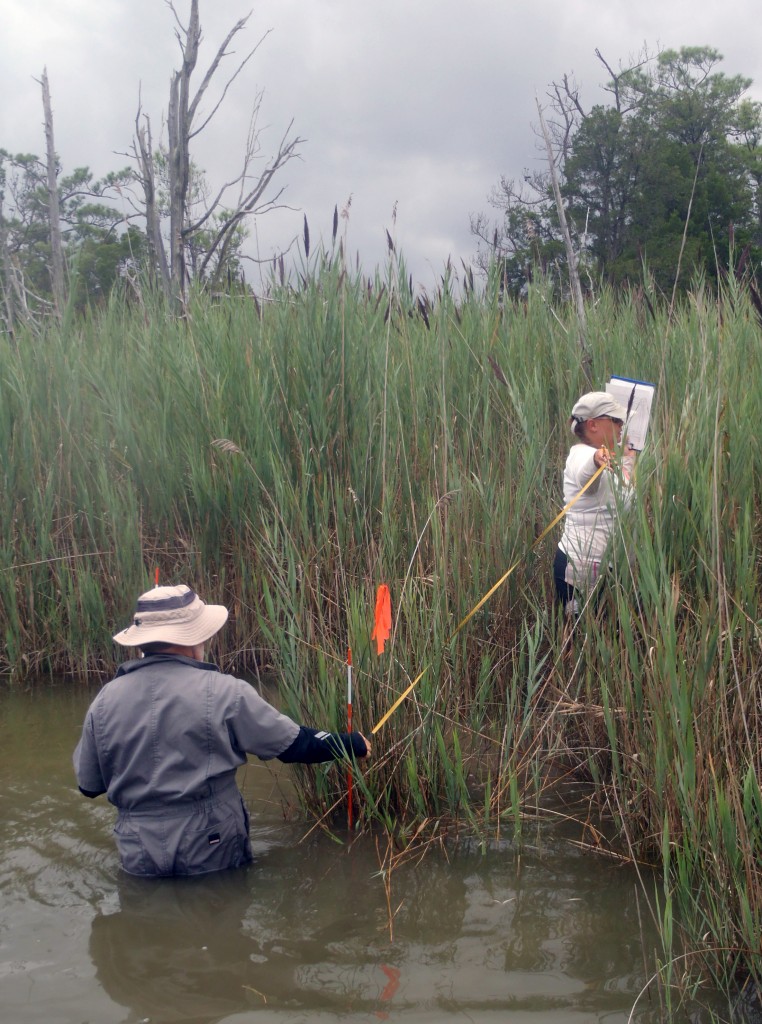How an invasive marsh plant could leave many fishes and invertebrates homeless, hungry and vulnerable to predators
by Heather Soulen, SERC marine ecology lab technicianIt’s no surprise that invasive species can dramatically alter an ecosystem. Often, invasive species outcompete native species and disturb ecosystems that have not evolved to handle the new intruder(s). One such invader is the introduced common reed (Phragmites australis australis). Introduced Phragmites alters native plant communities that native animals use. Over the past several decades, native marshes containing plants such as marsh elder, saltmeadow hay, black needlerush, sea lavender, cordgrasses, threesquares and bulrushes have fallen to introduced Phragmites in the Chesapeake Bay and throughout the Atlantic coast, turning once diverse marshes into a thick monoculture forest.
The Great Marsh Surface Uprising
Click to continue »


